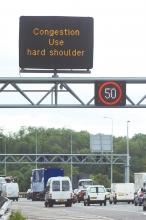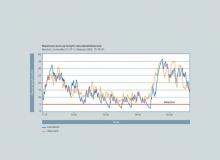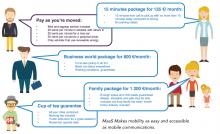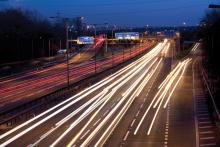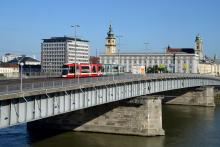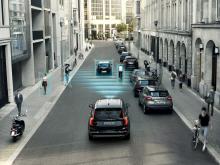
David Crawford looks at the latest thinking about calculating the benefits associated with the environmental side of ITS schemes.
The penny is dropping that some environmental costs “are being shifted outside the traditional bounds of evaluation methods” for ITS-based road transport projects, according to researchers at the UK
She and colleague Dr Ben Kolosz have developed a pioneering approach in extending cost–benefit analysis for the sustainability impact of inter-urban ITS’ – which, she says, “anticipates likely trends in evaluation methodology in the roads sector.” As a ‘test bed’, the researchers have chosen the busy M42 motorway (freeway), in the English West Midlands as an illustration of taking into account the full environmental impacts of three ITS applications, using current official traffic figures.
Roadside infrastructure
The first, active traffic management (ATM) – which combines variable speed limits with dynamic sign-controlled peak-time hard-shoulder running - is already operational on the M42 and elsewhere in the UK, on mainland Europe and in the US. Researchers note that the roadside infrastructural components are connected to a data store and a traffic control centre, for which there are energy costs.
Other, near-market technologies modelled are intelligent speed adaptation and platooning. All three emerge as potentially contributing positively to sustainability, in terms of environmental and socio-economic benefits. But, to assess these in detail, the researchers want an enhancement of the conventional evaluation process, which relies on a single discounting method for economic–environmental modelling over lengthy timeframes.
These last, calculated in Europe in terms of climate change mitigation, cover traffic management centre and data centre energy emissions, reduced tailpipe pollution, the ‘embedded’ emissions involved in roadside infrastructure manufacture, additional hardware needed for installation in vehicles, and safety measures. This would enable public authorities to make decisions on direct investments for traffic management measures using a conventional discounting rate, while using the new method for environmentally-oriented schemes.
Offset emissions
On this basis, the research indicates that ATM, as deployed on the M42, will offset greenhouse gas emissions by 99kt of CO2 equivalency over a 25-year lifespan, after taking into account expected improvements in vehicle technology and despite the indirect environmental impacts currently being taken into account. These sit alongside the carbon offset that the system generates through improved management of the transport network and smoother flows.
The result is a current benefit-cost ratio (BCR) of 5.89, although the researchers acknowledge that the figure will drop over the system’s lifecycle owing to rising energy costs. One reason for the system’s high performance, they say, is that it incurs no in-vehicle equipment costs for the vehicle manufacturer or driver - unlike intelligent speed adaptation (ISA) and platooning.
The researchers have gone on to model an evaluation of ISA over a 40-year appraisal period. They assume that the technology would operate independently of any roadside infrastructure, relying on satellite communications and onboard digital mapping software, and therefore no data centre emissions are taken into account.
As heavy trucks are already fitted with automatic speed limiters, the researchers assume that ISA would apply only to cars and light trucks. They do not see implementation as being practical at the chosen test site and calculate a negative BCR owing to the cost of the in-vehicle equipment. Within a national perspective, however, there could be different results, with the system recuperating benefits as hardware becomes standardised and the technology matures.
Platooning
The evaluation of platooning, carried out for the period from 2030 to 2050, assumes the system will operate on only one lane, and that only cars will be equipped. It will need roadside infrastructure, typically in the central reserve, to support communication between vehicles in order to maintain the platoon and to carry vehicle-to-infrastructure traffic information.In principle, the researchers believe that the system could reduce emissions by around 20% and save 280kt of CO2 equivalency over 15 years of operation on the M42. Accident prevention would be at a high level, thanks to the fully automated technology, but if an accident did arise, it could affect the entire platoon and increase the scale of the damage.
If proven to be successful, platooning could become widely available, through new vehicle purchases from 2035, within the M42 area. Ignoring in-vehicle connectivity costs would produce a positive BCR; these could in any case be mitigated by government grants of the kind made available to keep down the cost of electric vehicles.
Concludes Kolosz: “Our form of evaluation treats ITS as a complete system. It takes into account, not just the roadside, but areas where environmental costs are separated and managed by, for example, a regional traffic control centre. Our method therefore extends the evaluation boundary fully to capture the whole architecture of the proposed ITS service, making previously hidden elements visible for evaluation.”
Transport technology: the rebound effect
“The ‘rebound effect’ refers to behaviours or other systemic responses that tend to counteract the benefits of planned improvements. For example, vehicle fuel efficiency or safety gains seem to make people drive a little further or slightly more recklessly. These effects need to be recognised when estimating future benefits of any changes.
Different queues
The introduction of self-service ticket machines at stations has led to different kinds of (rather than less) queuing, with little improvement in throughput. Transport technology implementations often appear to be more about efficiency gains for operators with any economic or service benefits for travellers seen as a secondary effect.
An additional consequence of the growing efficiency of mass transportation is increasing reliance on technology such that, when problems occur, the consequences can be severe. European air traffic control problems just before Christmas 2014 are one such example.
Utopia - as portrayed in visions of future transport - of happy and informed commuters making fast, smooth and uncongested, technology-enabled journeys will be just as much an illusion in the future as it is now. History shows that technology democratises and lowers barriers to participation (a kind of rebound effect); so transport resources are shared with more people.
A governmental colleague once confided that he uses a ‘rule of three’ when evaluating technology proposals. Companies saying they can deliver a project in one year typically take three, two-year projects take six, and so on.
It is not surprising, then, that proposed transport safety improvements don’t always deliver all the estimated benefits, in the three (nine?) years between calculating these benefits and implementation, other improvements will have reduced the ‘target’. In addition, the longer implementation is delayed, the less relevant the technology will look. Perhaps, then, in evaluating the potential benefits of new technology there are two points to consider. First, human behaviour or other factors tend to counteract the desired effects. Second, in the time taken to achieve deployment, the world will have changed so much that the technology proves less valuable.
No surprise
This is not intended to paint a gloomy and fatalistic picture. As scientists and engineers we should not be surprised when our a priori estimates of benefits are later shown to be optimistic.
However, as advocates for technology delivering societal benefits, we may need to acknowledge, and even participate in, the group euphoria of optimistic prediction to try new approaches and systems - at least some of which will prove beneficial.
Taking a user perspective on mass transit, therefore, we should perhaps direct technology less towards safer, faster and more efficient journeys, and more towards travel that provides increased user comfort and robustness against disruption. Those will be the KPIs that I’ll look for in future evaluations”.

